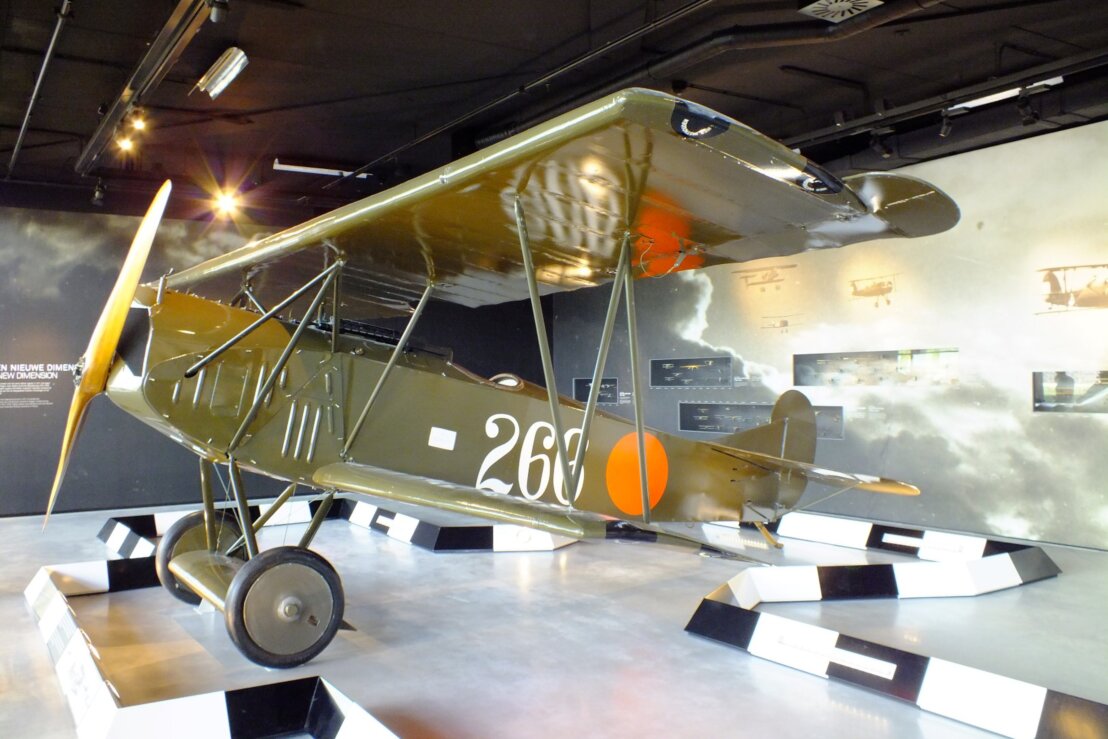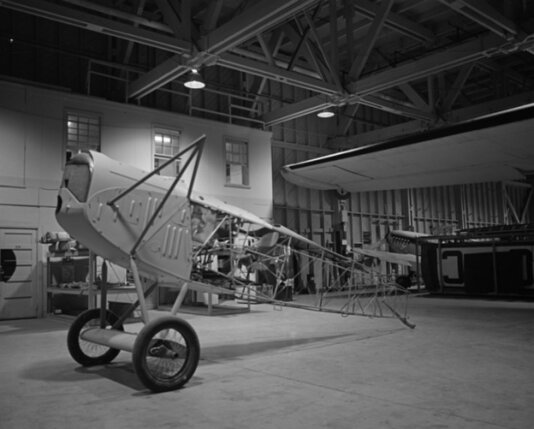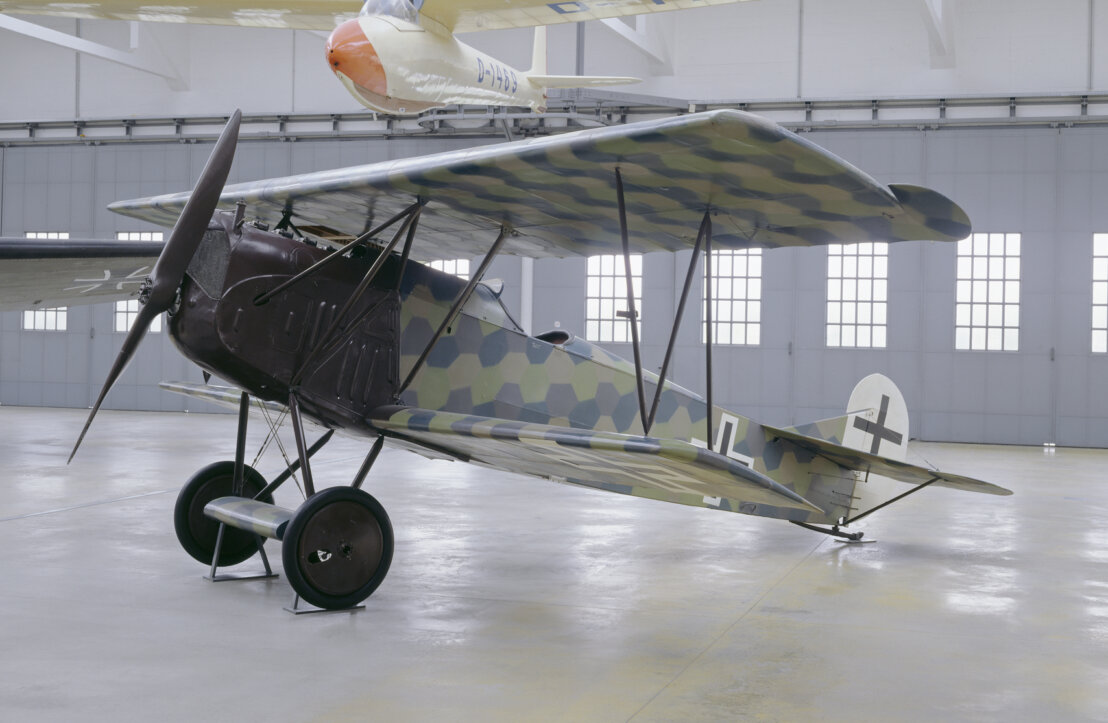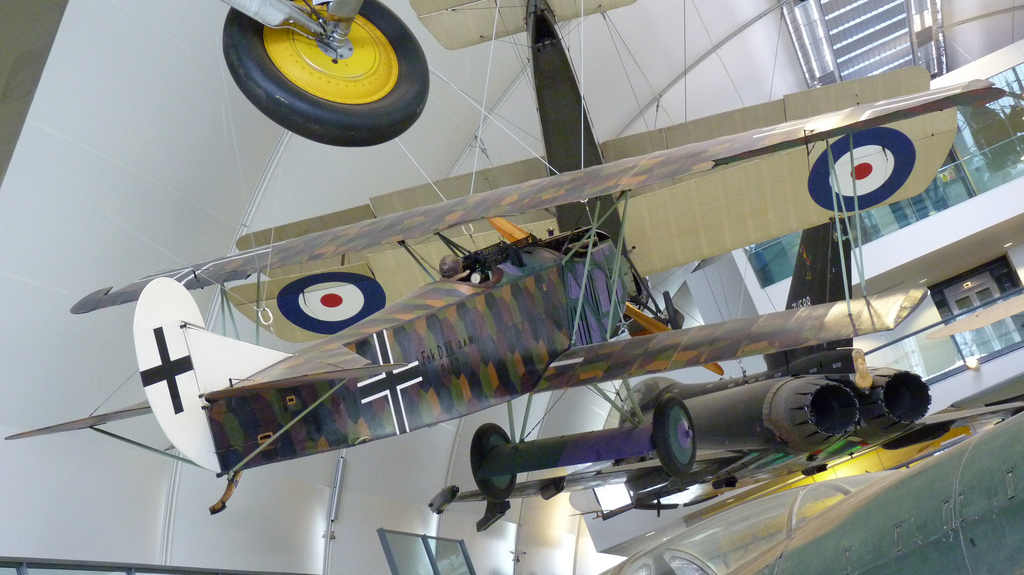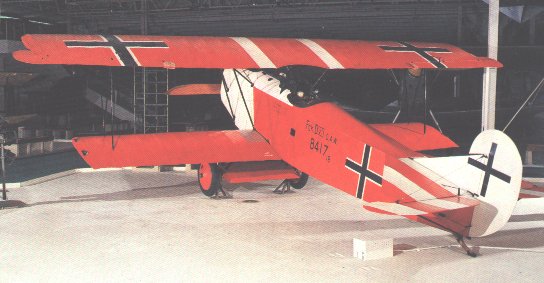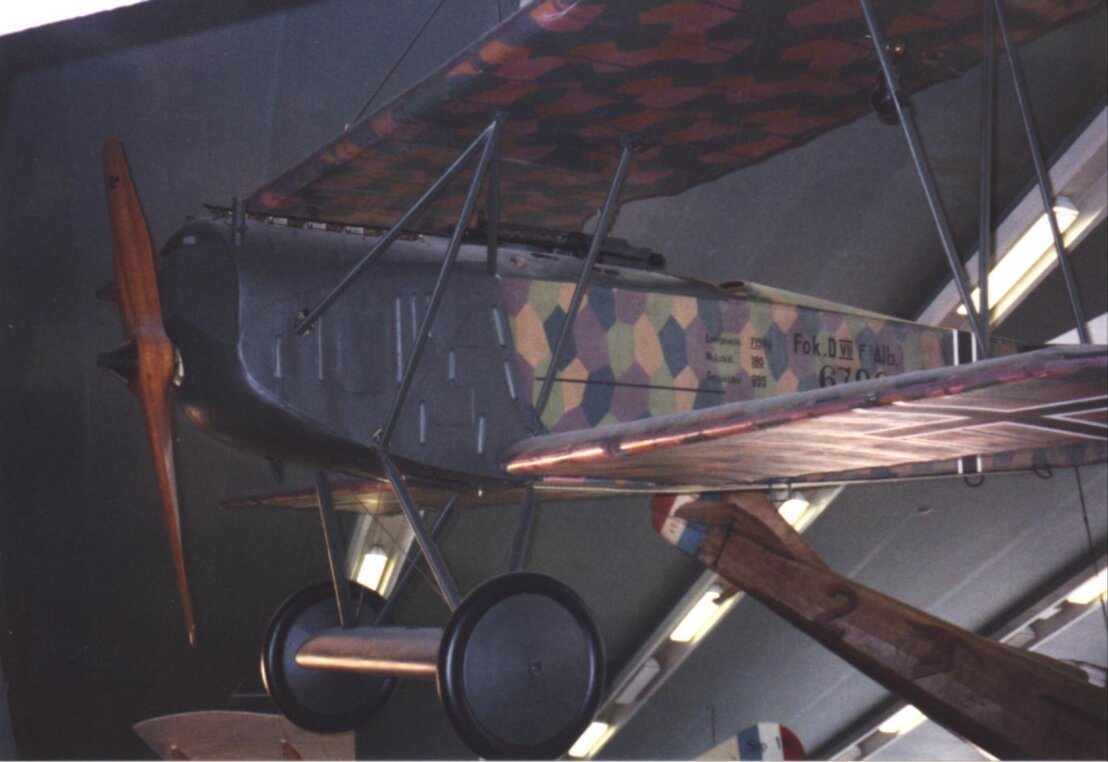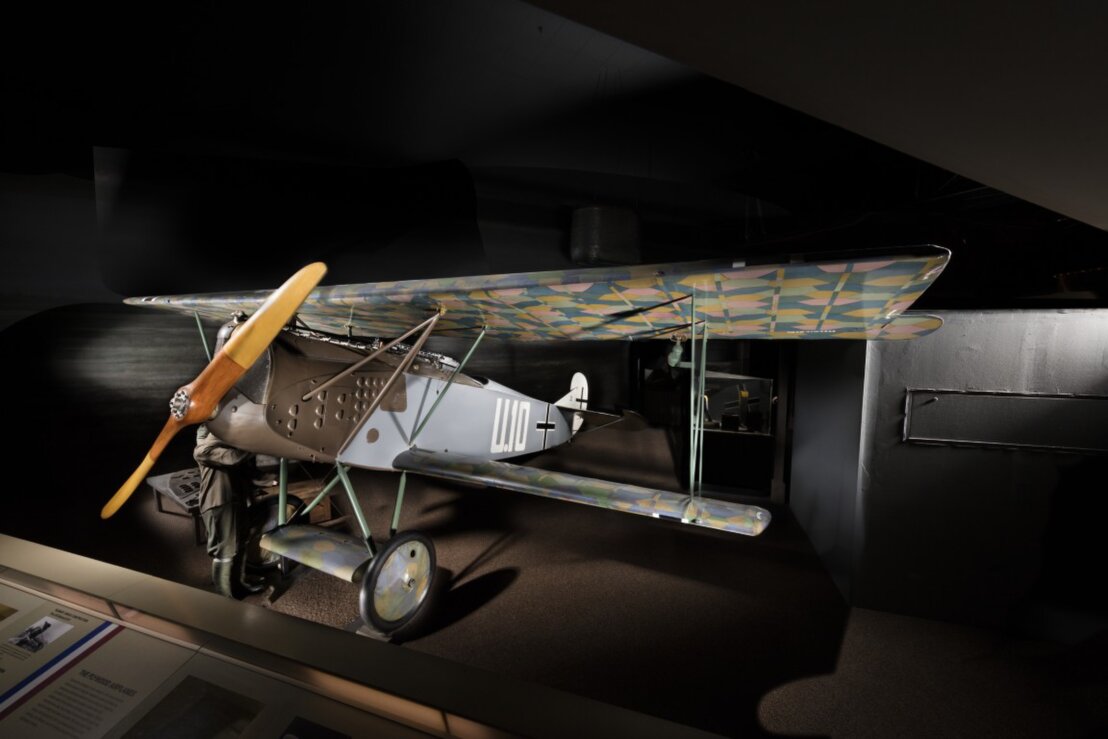Fokker D.VII Survivors
There are seven original Fokker D.VII airframes left. Only one of them, at the Brome County Historical Society, is almost in the same condition as it was in 1918. All the others are in some point in time rebuild or had it’s linen fabric reapplied.
The surviving Fokker D.VII’s can be found in:
Nationaal Militair Museum
Nationaal Militair Museum
Verlengde Paltzerweg 1
3768 MX Soest
The Netherlands
Website: https://www.nmm.nl
The Nationaal Militair Museum is located at the former Soesterberg airbase and is the successor of the former 'Militaire Luchtvaart Museum' and 'Legermuseum'.
This D.VII, with c/n 2523, is one of the 142 D.VII’s shipped to the USA after World War 1. It was registered on the US civil register, and was used in the movies Hell’s Angels and Men With Wings.
After going through several owners, it ended up in the Wings and Wheels collection. From there, it was bought in 1981 by the Fokker company for US$50.000. It arrived at the end of 1981 in The Netherlands, and was transported to the museum a year later. The D.VII was completely rebuilt, and put on display in the museum as ‘266’ from the Dutch LVA.
The history of this Fokker D.VII can be found here.
Brome County Historical Society
Brome County Historical Society
130 Chemin Lakeside
Knowlton, QC J0E 1V0, Canada
Website: https://www.lacbromemuseum.ca/
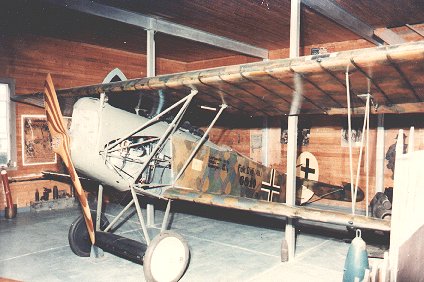
This is the most original D.VII still in existence in the world. It still wears its original lozenge coloured fabric! This is one of the 22 D.VII’s that were shipped as war booty to Canada. It is the Albatros build ‘6810/18’. It has been on view at the Brome County Historical Society since august 1921, and was only taken out in 1963 for display by the RCAF. At that time, a part of the rudder was refurbished.
National Aviation Museum
Canada Aviation and Space Museum
11 Aviation Parkway
Ottawa, Ontario, K1K 4R3, Canada
Website: https://ingenium.ca/aviation/en/
This is the Fokker build D.VII 10347/18. It was sent to the USA after World War I for the US Air Service. Later it was used for several movies, including Hells Angels. It was rebuilt as a two-seater with a 200hp Hall-Scott engine, wearing the US civil registration #1178.
After going through several hands, it was acquired by the National Aviation Museum in 1971. A Mercedes D.III engine was donated by the university of Manitoba, and originates from the D.VII 6849/18.
Because other projects got more attention, there was almost nothing done on the D.VII between 1975 en 2015. In 2016 it was sent to Vintage Aviator Limited in New-Zealand. They restored the D.VII to its present condition, and it went on display in 2019.
Deutsches Museum
Deutsches Museum
von Meisterwerken der Naturwissenschaft und Technik
Museumsinsel 1
80538 München
Website: https://www.deutsches-museum.de/
This D.VII was found after World War 2 in a barn, probably originating from the Deutschen Luftfahrt Sammlung. Although wearing the registration ‘4404/18’, it is not sure that this is the aircrafts true identity.
During restoration it was found that there were many ‘non-World War 1’ modifications, and the Dutch MLD-serial ‘D-28’ and Dutch markings were found underneath the paint. There is also a little plate found behind the cockpit with inscription 'D.28 13.9.34'.
There is a photo dated 24 May 1940 with Hermann Goering and Friedrich Seekatz (who was in charge of the Fokker factory at that time) when they were inspecting a Fokker D.VII at Schiphol Airport. This might have been the 'D-28'.
In the autumn of 2025, the Deutsches Museum will loan the Fokker D.VII to the Dutch Nationaal Militair Museum for the duration of five years.
Royal Air Force Museum
Royal Air Force Museum London,
Grahame Park Way,
London, NW9 5LL
Website: https://www.rafmuseum.org.uk/
This D.VII was brought to Engeland in the thirties, coming from France, and was part of the Nash collection. It has been on display for a long time as the 8417/18, in a colourful red finish. Since september 1997, it is back on display after a four year restoration. It now wears a more correct five-color lozenge camouflage pattern.
Musée de l'air et de l'espace
Musée de l’Air et de l’Espace
Aéroport de Paris – Le Bourget BP 173
93352 Le Bourget Cedex France
Website: https://www.museeairespace.fr/
This D.VII, the ‘6796/18’, was one of many brought to France after World War I.
National Air And Space Museum
National Air and Space Museum
Independence Avenue at 6th Street SW
Washington, DC 20560
Website: https://airandspace.si.edu/
This D.VII, the 4635/18, was captured when its pilot, lt. Heinz von Beaulieu-Marconnay, accidentally landed on an airfield held by the Americans.This happenned two days before the armistice, November 9, 1918.
The number ‘U.10’ on the side of the fuselage refers to von Beaulieu-Marconnay’s former cavalry unit, the Tenth Ulans.
(Read the story behind this at : https://www.uh.edu/engines/epi1144.htm)
